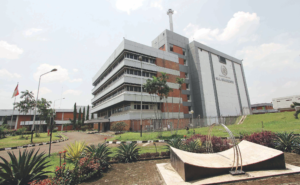Publications

SYNOPSIS
Recent developments in Indonesia’s sustainability outlook that includes a net-zero goal by 2060 are pointing to stronger commitments to reducing carbon emissions from energy use. At the same time, short- to medium-term realities, and a lack of public trust may derail the long-term sustainability vision.

COMMENTARY
Indonesia pledged a 2060 net-zero goal at the COP26 last year. Following that, the International Energy Agency (IEA) recently launched a report that proposes optimistic scenarios for the country to realise its ambition.
The report comprehensively considered key energy-consuming sectors and underscored the importance of increased energy efficiency and renewable energy expansion as key strategies. It cautioned the need for policy reforms on pricing, subsidy, and renewable energy regulations. While acknowledging that the coal sector stood to lose, the report strongly argued that the proposed changes, including the tapping of Indonesia’s large nickel reserves as a competitive advantage in clean energy value chains, will be beneficial for the country’s transformation to an advanced economy.
How likely is Indonesia going to achieve the objective? Given that Indonesia has been laying down the institutional and regulatory building blocks for renewable energy development in the last fifteen years, this is not impossible. The 2060 net-zero vision was built upon ongoing efforts to increase the share of renewable energy sources to 23 percent by 2025. Just last month, President Joko Widodo signed Presidential Regulation No. 112 of 2022 on the “Acceleration of Renewable Energy Development for Electricity Generation”. The new regulation affirmed the government’s plan for renewable energy financing while setting a limit to the life of coal power plants, which is slated to end by 2050. Furthermore, the long-awaited bill on new and renewable energy is expected to be finalised this year.
The Challenges
While the targets are impressive and support for renewable energy is getting stronger, meeting the goals as per timeline may run into some challenges.
First is in managing immediate realities vis-à-vis the long-term sustainability vision. At bottom, energy sector performance must address energy security. Ensuring energy availability, accessibility and affordability will remain the government’s top priority. In view of the medium- to long-term net-zero-related goals, the government will likely have to address short-term energy security basics when emergency situations arise.
This is evidenced by difficulties arising from the COVID-19 pandemic and the current war in Ukraine. These crises have changed energy-related projections that the world had earlier. Despite the continuous push to expand the use of renewable energy sources globally, the end of coal usage is nowhere in sight. In fact, according to a recent report by the IEA, coal demand this year is expected to hit an all-time high in a decade, going up 0.7 per cent from last year to reach 8 billion tonnes this year. Coal demands in India and the European Union are expected to jump 7 per cent. The Ukraine war and its associated implications on natural gas is a strong factor driving up coal demand.
Indonesia has grappled with this type of challenge before. Towards the end of 2016, in the face of an immediate imperative to reduce the energy subsidy and maintain price levels, Ministerial Decree No. 12 of 2017 was issued to cap the incentives for renewable energy development. This was perceived as a setback to the country’s 2025 23 per cent renewable energy goal, but the decree pushed ahead anyway to ensure affordability.
Another related issue of immediate interest is in securing revenue from coal usage. In addition to domestic use, Indonesia is, at present, the largest thermal coal exporter in the world. Thus, it is highly likely that the country will continue to participate in the coal market if the demand exists. This year’s high coal price is a boon for Indonesia. By May 2022, the non-tax revenue from mineral sources and coal stood at around S$2.7 trillion; a 105.3 per cent increase from last year. By August, it had hit 200 per cent above this year’s target.
The second challenge is in ensuring coordination of policies across sectors. Achieving net-zero-related goals requires a wholesale transformation. Different sectors, however, move at different speeds depending on their contexts. Some switch to renewable energy sources more readily, while some others like the iron, steel and cement industries may need more time. This can become problematic unless realistic policies that are sensitive to the different contexts are put in place, and properly coordinated.
A third challenge has to do with external factors, such as in how soon global innovations can bring down the costs of renewable energy technologies, and how much international cooperation relating to technological and financial support that Indonesia can get.
The Trust Factor
A lack of public trust can be a hurdle too. The upcoming bill on new and renewable energy is designed to ensure that the country does not cut itself short of any energy options, including the long controversial nuclear source. While the latter is a positive development from energy security perspective, it will probably prove a liability given the strong stigma associated with nuclear power plants and the lingering suspicion of the country’s capacity to deal with nuclear safety – be it institutions, human resources, and even geography.
Considering that nuclear is a source of clean energy that can produce stable and large amounts of electricity, it may one day become necessary to meet the double demands of growing energy needs and reducing emissions. The question in the public’s mind is Indonesia’s ability to operate and manage nuclear power installations safely. Society’s pushback against nuclear may mean a relapse to coal if wind, solar, and other renewable energy sources turn out to be inadequate to meet the country’s energy security parameters.
Moving Forward
While embracing the long-term net-zero goal, Indonesia is likely to adjust its energy policies between now and 2060. The country’s energy security is relatively resilient given its large coal and natural gas resources. In fact, there is no pressing need for it to switch to renewable energy sources were it not for the climate change imperative.
At the same time, however, the country is aware that its fossil fuel reserves are depleting. It already had the experience with oil when Indonesia was a major producer and exporter in the 1970s but became an importer in the early 2000s because of its drying wells. Decarbonising the energy sector therefore is in the country’s interest, although it can fall back on its fossil fuel reserves should situations demand.
Presently, coal power plants are losing favour. It is worth recalling that nuclear power plants used to face a similar problem of public resistance. But nowadays, with technological advancements, the attitude towards civilian nuclear energy is gradually softening. For coal, it may well be the same story. When situations change, risk appetites can also change. Whether Indonesia is able to achieve its 2060 net-zero goal will depend on what will happen in the next forty years.
About the Author
Margareth Sembiring is an Associate Research Fellow at the Centre for Non-Traditional Security Studies (NTS Centre), S. Rajaratnam School of International Studies (RSIS), Nanyang Technological University (NTU), Singapore.
